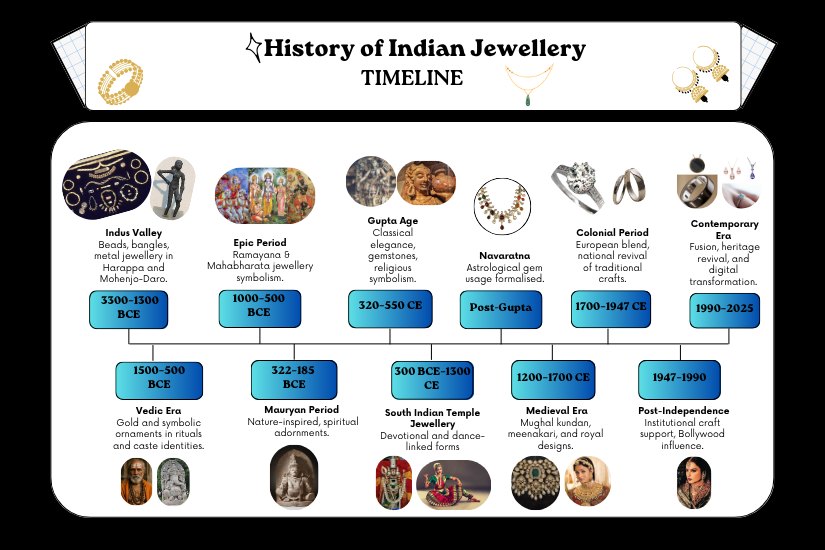The history of Indian jewellery dates back over 5,000 years, beginning with the Indus Valley Civilisation. India has long been known as the “land of gold and gems,” with jewellery playing a vital role in culture, religion, and royalty. Ancient Indian ornaments were crafted from gold, silver, beads, and precious stones, often symbolising power, spirituality, and beauty. Over centuries, regional styles like Kundan, Meenakari, and Temple jewellery evolved, blending artistry with cultural heritage. From dynasties like the Mauryas and Guptas to the Mughals and modern India, jewellery continues to be a timeless expression of identity and tradition.
Ancient Foundations: Indus Valley to Vedic Era
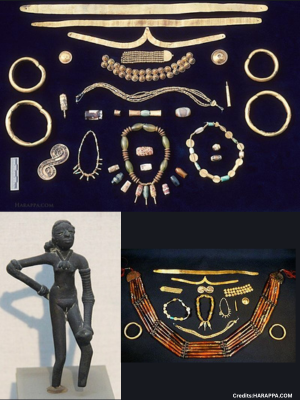
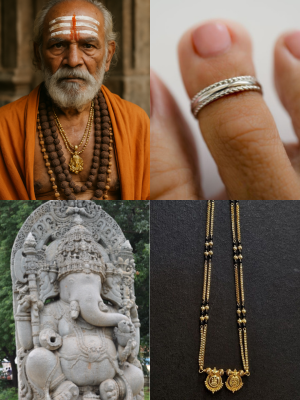
Indus Valley Civilisation (c. 3300–1300 BCE):
- The earliest evidence of Indian jewellery comes from the Indus Valley Civilisation, one of the world’s first urban societies.
- Craftsmanship: Gold, copper, silver, faience, carnelian, agate, and ivory were used to make beads, bangles, earrings, and necklaces.
- Bead-Making Hubs: Sites like Lothal were advanced centres of bead drilling and stone polishing. Evidence shows both men and women wore jewellery. Techniques like lost-wax casting were already in use.
- A famous bronze dancing girl statue from Mohenjo-Daro wears a stack of bangles on her arm, proof of ornamentation practices.
Vedic & Post-Vedic Periods (1500–500 BCE):
- With the arrival of Vedic culture, jewellery took on a more ritualistic and spiritual dimension. The Arthashastra discusses state-controlled gem trade, taxation on goldsmiths, and grading of diamonds. Married women wore bichuas (toe rings) and mangalsutras as symbols of marital status—customs that continue today.
- Vedic Texts mention ornaments like Kundala (earrings), Kantha (necklaces), Nupura (anklets), and Keyura (armlets).
- Gold was considered sacred (Hiranya) and worn during rituals and sacrifices.
- Jewellery denoted caste, status, and divine blessing, especially among Brahmins and Kshatriyas.
Dynasties & Cultural Fusion
Jewellery during the Mauryan and especially the Gupta era reached unparalleled refinement.
- Use of precious gemstones like rubies, emeralds, and diamonds expanded.
- Gupta art (Ajanta caves) depicted elegant, gem-laden figures and gods.
- Jewellery became a part of Shodasha Shringar (sixteen adornments) for women and was linked with classical dance, music, and temple rituals.
- Maurya & Gupta Empires (321 BCE–550 CE):
Jewellery reflected both opulence and devotion. Royal patrons supported workshops that specialized in granulated gold, intricate gemstone settings, and filigree work. The Navaratna pendant became a staple among kings for its supposed cosmic powers. - Gandhara, Sunga & Kushan Periods:
The fusion of Greek aesthetics with Indian religious themes birthed elegant designs. Deities like Buddha were adorned with real jewellery in sculpture, showing how craftsmanship mirrored religious art.
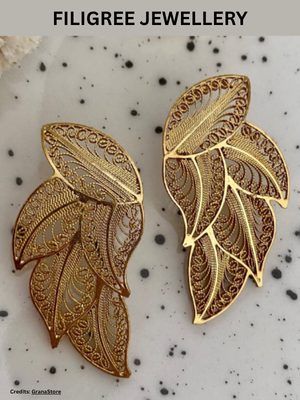
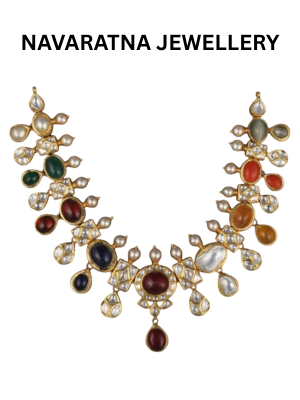
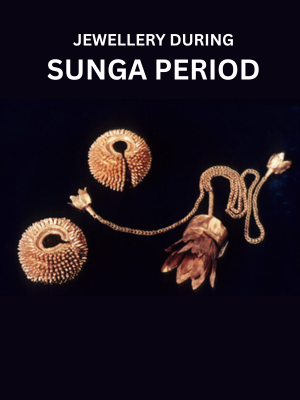
Sangam & South Indian Temple Jewellery (c. 300 BCE – 13th CE): Devotional Ornamentation
- South India developed a parallel tradition of temple jewellery, deeply connected to dance, faith, and royalty.
- Satavahana & Chola Periods: Southern dynasties developed temple jewellery, originally used to ornament idols of gods and goddesses. This style featured motifs of elephants, peacocks, and lotuses carved in gold.
- Ornaments like Vanki (armlets), Oddiyanam (waist belt), and Makara Kundala (earrings) became temple and bridal essentials.
- Chola, Chera, and Pandya dynasties contributed to gold-heavy, deity-inspired designs.
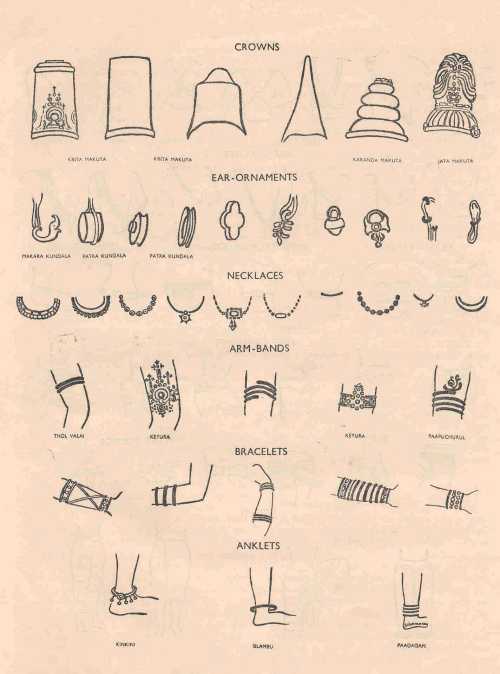
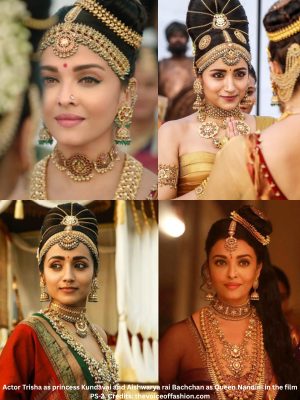
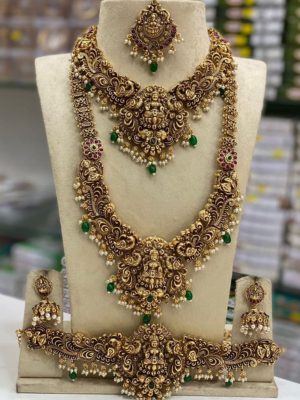
Medieval Grandeur: Mughal to Regional Elite
The Mughal dynasty revolutionised Indian jewellery by introducing Kundan, Meenakari, and Jadau styles.
- Mughal Period (16th–18th Century):Fusion of Persian Grandeur and Indian Artistry
Emperor Akbar and his successors were passionate patrons. Jewels like emeralds, rubies, diamonds and Jewelled Dagger Hilts were part of court attire. Styles like Kundan-Jadau involved embedding uncut diamonds into gold foil using lac resin. - Heavy use of uncut diamonds (polki), enamelled backs, and symmetrical motifs.
- Emperors and queens like Akbar and Nur Jahan commissioned exquisite pieces.
- Jewellery was used in turban ornaments (sarpech), earrings (chandbali), and layered necklaces (haar).
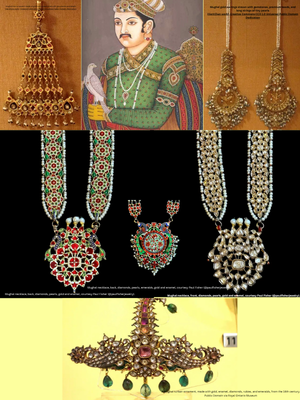
Rajputana & Deccan Sultanates:
- Rajput women wore Borlas (forehead ornaments), Haathphools (hand harnesses), and elaborate waistbands (kamarbandhs).
- Deccan rulers developed enamelled gold jewellery with vivid colours
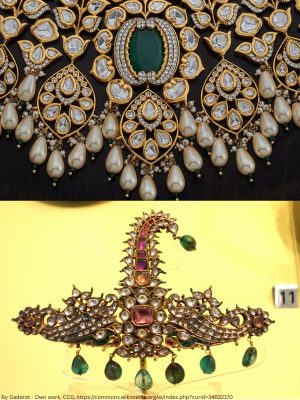
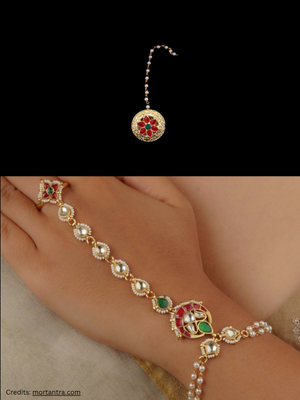
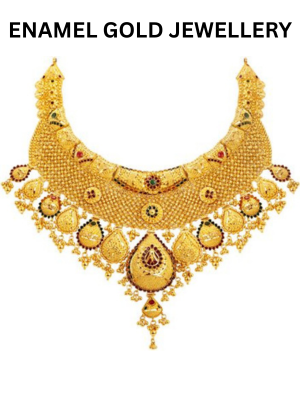
Regional Artistry:
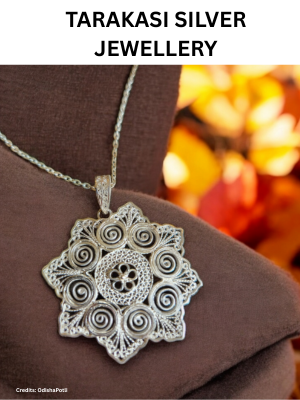
- Rajasthan: Kundan-Meena, Thewa (gold on glass)
- Gujarat: Silver tribal jewellery with oxidized finishes
- Tamil Nadu & Kerala: Temple jewellery, heavy gold chokers (Kasumalai), and mango mala
- Assam: Traditional Jun Biri crafted in pure gold
- Cuttack, Odisha: Intricate silver Tarakasi work
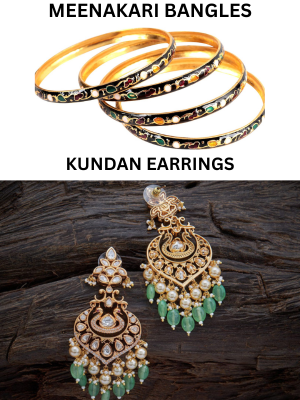
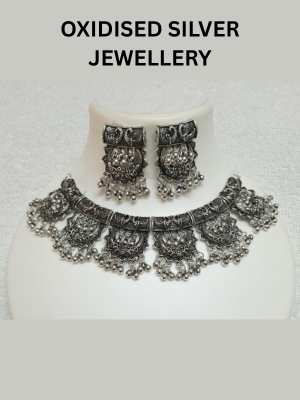
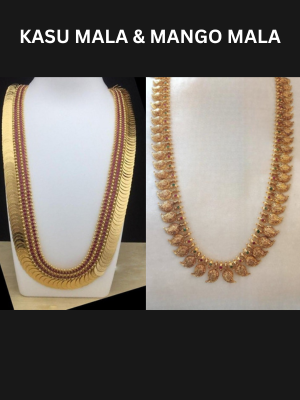
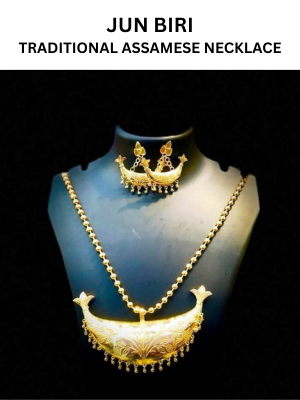
Colonial & Contemporary Evolution
Colonial Era (1700–1947): European Influence Meets Indian Heritage
The British era saw both adaptation and resistance:
- British Raj Influence (18th–20th Century):
The British altered Indian jewellery by encouraging European cuts, rose diamonds, and platinum settings. Indian maharajas started commissioning European houses like Cartier and Boucheron, blending east and west into iconic pieces.
Post-Independence (1947–1990): National Revival
Post-1947, jewellery became a symbol of cultural preservation and industrial development.
- Independence & Bollywood Era:
From 1947 onwards, Indian cinema helped popularise jewellery. Iconic actresses like Madhubala, Waheeda Rehman, and Rekha popularised traditional gold ornaments and temple jewellery across generations.
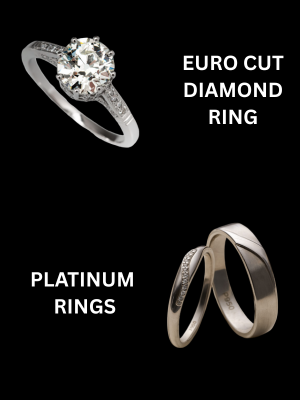
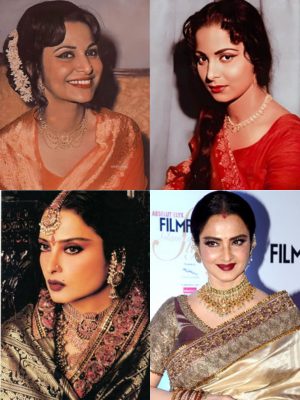
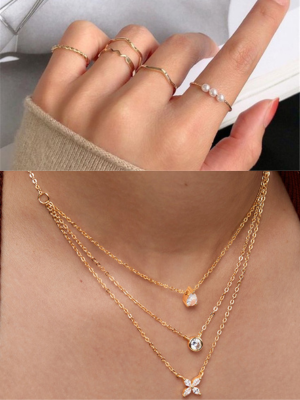
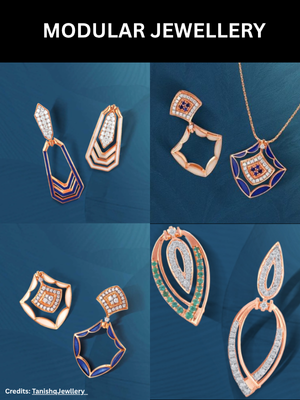
Contemporary Jewellery (1990–2025): Fusion, Innovation, Identity
Modern Indian jewellery is a blend of heritage and innovation:
- Revival of temple, tribal, and Navaratna jewellery for global audiences.
- Growth of fusion designs that mix traditional forms with minimalist fashion.
- Rise of brands like Tanishq, Sabyasachi Jewellery, Amrapali, and independent designers.
- E-commerce and digital design have democratised jewellery access.
- Men’s jewellery, spiritual talismans, and astrology-based accessories have resurged.
- Millennial and Gen Z Preferences: Lightweight, functional, and semi-precious stone jewellery gained momentum. Urban buyers favoured modular jewellery, layered chains, and minimalist rings over traditional bridal sets.
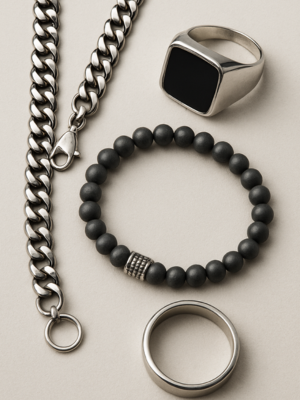
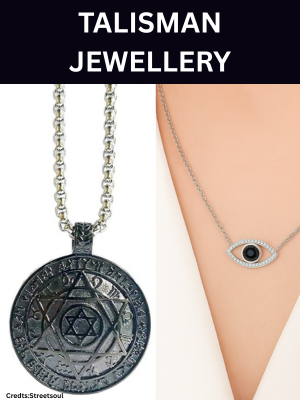
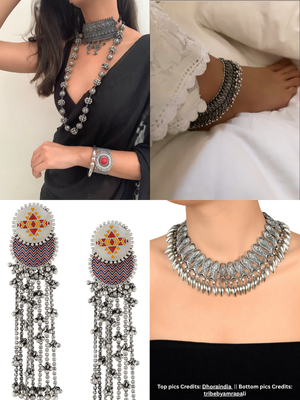
2025 Trends: Sustainability & Innovation
- Rise of Lab-Grown Diamonds:
Lab-grown diamonds are eco-friendly, affordable, and chemically identical to mined ones. With rising demand, they’re reshaping modern luxury and attracting conscious Gen Z and millennial buyers. - Smart Jewellery:
Smart jewellery effortlessly merges technology with style, offering both functionality and fashion. These lightweight, comfortable pieces are perfect for everyday wear, making health tracking more accessible and elegant. From fitness monitoring and menstrual cycle tracking to UV exposure sensors, smart rings and pendants are redefining how we engage with wellness. Many designs also prioritise personal safety, featuring emergency alerts and location-sharing capabilities, making them as protective as they are stylish. - Coloured Gemstone Comeback:
Vibrant gemstones like Paraiba tourmalines, tanzanites, and morganites are becoming popular choices for cocktail jewellery and contemporary bridal designs. Bright stones such as aquamarine, lapis lazuli, amethyst, malachite, and garnet are also gaining widespread appeal. Known for their vivid hues and distinctive charm, these gemstones add a bold, expressive touch to any ensemble. - Customisation Boom:
Digital try-ons using AR, AI-designed settings, and 3D-printed prototypes are revolutionising customer experiences.
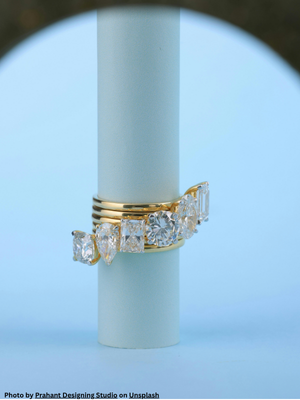
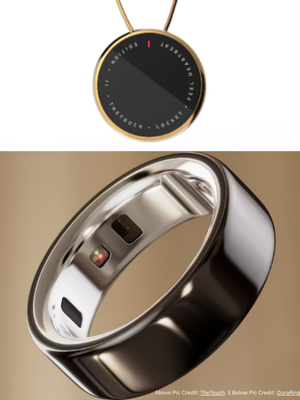
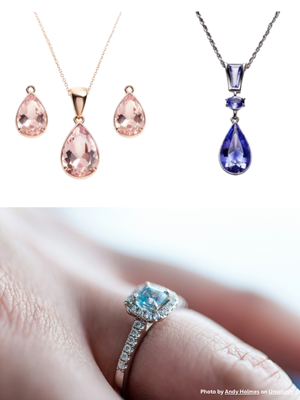
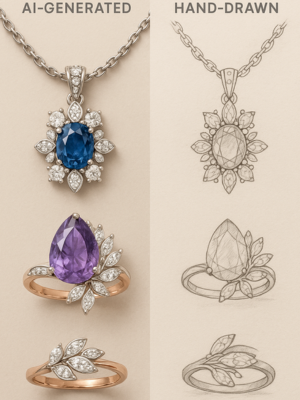
Heritage & Global Craftsmanship
- Craft Revival Projects:
NGOs and govt bodies like ODOP (One District One Product) are reviving ancient crafts like Munj grass jewellery (Prayagraj), Bastar iron jewellery, and Bidri work (Karnataka). - Luxury Meets Handcrafted:
Global fashion houses—like Dior, Chanel, and Gucci—draw from Indian techniques in their haute couture collections.
Example: Sabyasachi’s collaboration with Bergdorf Goodman brought traditional Bengali craftsmanship to New York’s Fifth Avenue.
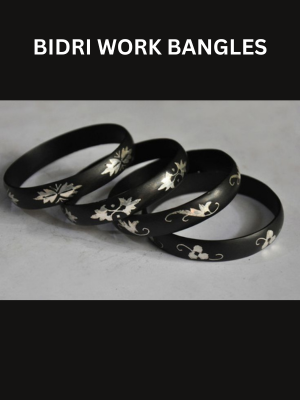
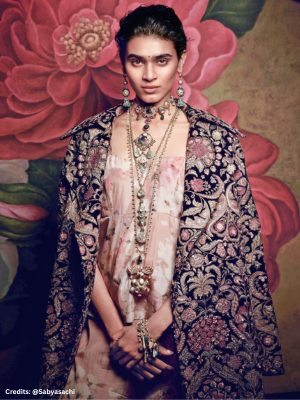
The Future Within the History of Indian Jewellery
The history of Indian jewellery is a radiant chronicle of the nation’s spirit—woven with threads of artistry, devotion, and cultural identity. From the meticulously crafted beads of the Indus Valley to the opulent gold and gemstone creations of royal dynasties, each piece is a testament to a civilisation that has long revered beauty with purpose.
Whether it is a tribal anklet, a temple pendant, or a contemporary diamond tiara, every ornament tells a timeless story—of faith and power, tradition and innovation, personal legacy and collective memory. Indian jewellery has always been more than mere adornment; it is a living heritage, reflecting the values and aspirations of its people across centuries.
As India strides confidently into a modern, sustainable future, the history of Indian jewellery continues to evolve—embracing global design influences and new-age technologies while preserving its sacred roots. It serves as a powerful bridge between past and future, where ancient symbolism meets contemporary expression.
In every sparkle lies a story; in every design, a legacy. The history of Indian jewellery is not just about ornaments—it is about the enduring soul of a culture that continues to inspire, illuminate, and enchant the world.
For an in-depth understanding of the evolution of design forms and regional jewellery styles, enroll in our Jewellery Design Manual Professional course.

